When you’re looking to adjust your diet for increasing strength and promoting muscle growth, the main macronutrients — protein, carbohydrate, and fat — likely consume the bulk of your attention.
And rightly so. Adequate protein is key for recovery, joint repair, and tissue growth. Dietary fat plays an essential role in creating and regulating vital hormones. And eating enough carbohydrates provides the fuel you need to hit new personal records in the gym. (1)
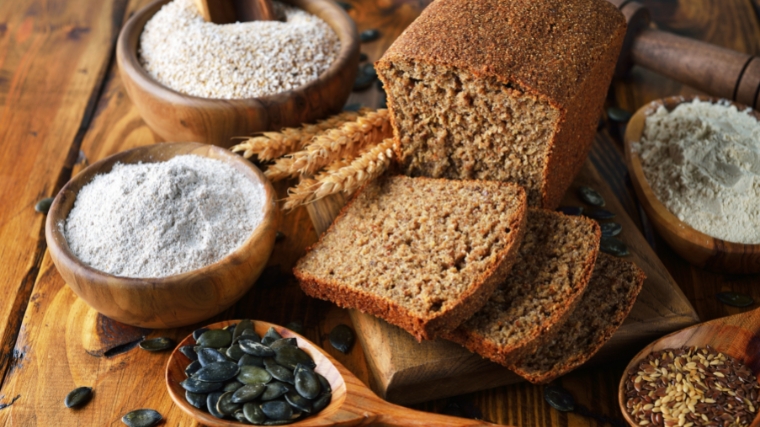
But getting your macros isn’t the full story. Getting enough dietary fiber plays a big role supporting your gym gains. You can optimize your fiber intake while eating the foods you love or by making some relatively simple substitutions. That’s all it takes. Read on to learn everything you need to know about the best high-fiber foods to support hypertrophy.
Editor’s Note: The content on BarBend is meant to be informative in nature, but it should not be taken as medical advice. When starting a new training regimen and/or diet, it is always a good idea to consult with a trusted medical professional. We are not a medical resource. The opinions and articles on this site are not intended for use as diagnosis, prevention, and/or treatment of health problems. They are not substitutes for consulting a qualified medical professional.
What is Fiber?
Dietary fiber refers to any type of plant-based carbohydrate that your body cannot digest. But just because your body can’t digest it doesn’t mean it’s not incredibly useful. Although fiber exits your stomach undigested, it goes on to support your health and performance in your colon.
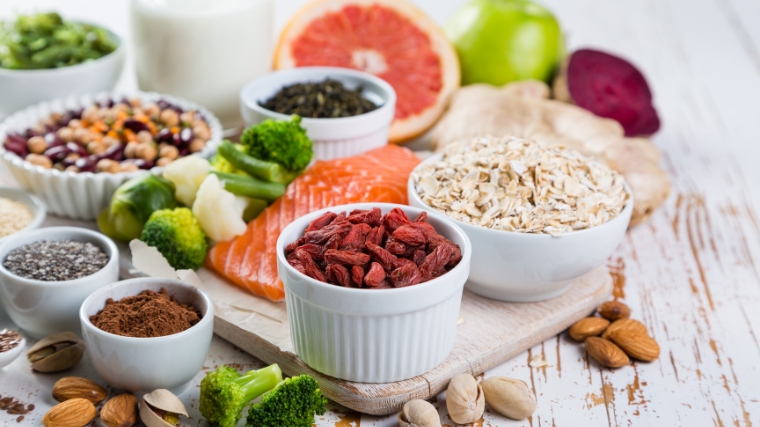
Eating enough fiber offers immense digestive benefits, which can in turn help you get the most out of all your other nutrients. (2) As a strength athlete, you probably pay attention to eating high-quality protein and carbs. The assistance dietary fiber gives your digestive system can help you process those essentials as efficiently as possible.
Fiber can also help with satiety or the sensation of being full for longer. (3) If you’re manipulating calorie intake to help with any fat loss goals, fiber can help you with portion control. Fiber also indirectly supports athletic performance by reducing your risk of heart disease, bowel cancer, and stroke. (4)(5)(6)
Types of Fiber
There are two main types of dietary fiber that athletes generally need to think about: soluble and insoluble.
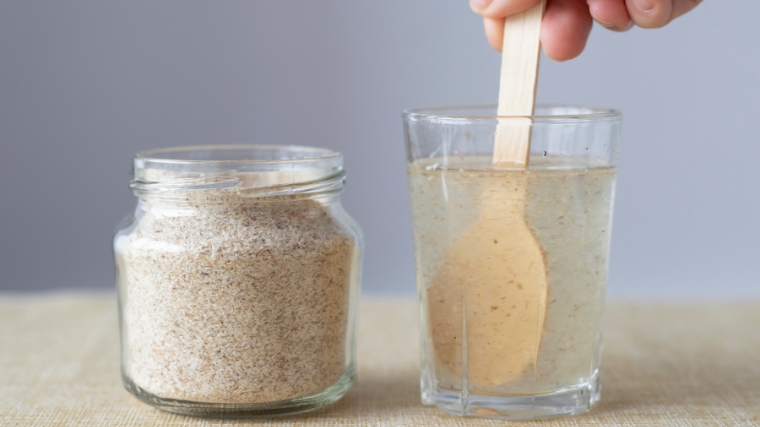
Soluble fiber is the “dissolvable” form of fiber. During digestion, it pulls water into the gut, forms a gel-like substance, and helps to soften your stool. As a result, it increases the feeling of fullness after eating, supports proper bowel movements, and encourages the production of “good” bacteria within the large intestine. (7)
Insoluble fiber, by comparison, is not dissolvable and instead adds bulk to your stool to allow food to pass through your stomach and intestines faster. This helps reduce the workload of your bowels, minimizing the risk of constipation.
Which Type of Fiber Is Best?
Ultimately, you want a mix of soluble and insoluble fiber within your diet, as they each have unique roles and perks. Without an adequate amount of each, you risk missing out on improved satiety, better digestive health, and greater disease prevention.
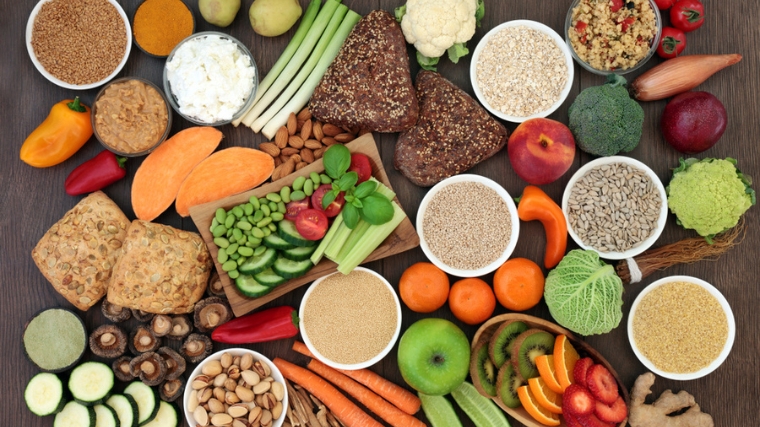
If you consume a blend, though, you’ll secure the advantages that each fiber type provides while ensuring that your diet is rich in a variety of whole foods. This variety is also vital for both diet satisfaction and your micronutrient intake. The good news is that it only takes a few basic food choices to guarantee that you cover all your fiber needs.
High-Fiber Foods
- Whole Wheat Wraps
- Whole Wheat Pasta
- Potatoes
- Sweet Potatoes
- Whole Grain Bread
- Whole Grain Rice
- Avocados
- Lentils
- Kidney Beans
- Chickpeas
- Oats
- Pears
- Apples
- Bananas
- Blackberries
- Carrots
- Broccoli
- Brussels Sprouts
- Almonds
- Chia Seeds
Whole Wheat Wraps
These wraps are an incredibly easy and tasty way to get more fiber into your diet. (The precise amount of fiber depends on the brand.) The best part is how versatile they are. You can tweak the fillings to your liking and even “stack” several other high-fiber foods into your recipes.
Whole Wheat Pasta
Like whole wheat wraps, whole wheat pasta is a dense source of fiber and works as a fantastic base for many dishes. The amount of fiber it contains is brand-dependent, but you can generally count on a good amount. If you can pair your pasta with some fibrous vegetables, too, you’ll be able to check off a lot of your daily fiber needs in a single meal.
Potatoes
Besides being great for cutting because of how voluminous they are, potatoes also provide a fair amount of fiber. According to the FoodData Central feature on the website of the U.S. Department of Agriculture (USDA), a 100-gram serving of potatoes can contain up to 14.9 grams of fiber.

Alongside their fiber content, they’re also rich in vitamin C, iron, and antioxidants, making potatoes quite the nutritional powerhouse.
Sweet Potatoes
Like regular potatoes, sweet potatoes are a great addition to any plate. The USDA’s FoodData Central feature indicates that there are 4.4 grams of dietary fiber in each 100-gram serving. Sweet potatoes are also high in vitamin B6 and magnesium.
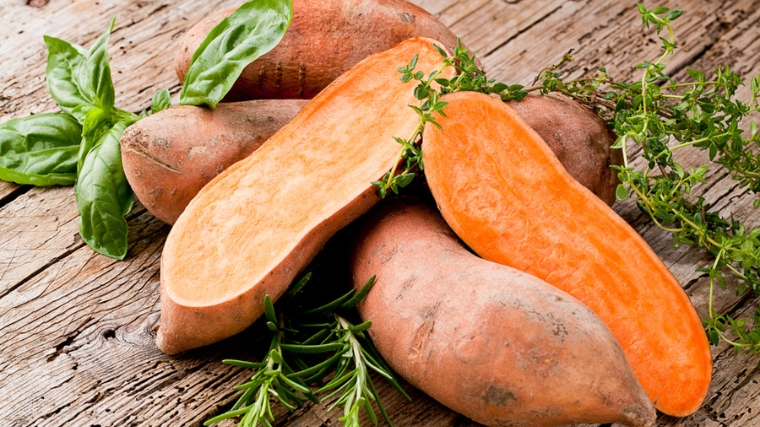
Plus, if you’re a fan of potato dishes, you can easily swap between regular potatoes and sweet potatoes for extra variety.
Whole Grain Bread
As far as convenience goes, it’s tough to beat whole-grain bread. It’s perfect for sandwiches and works wonderfully with soup recipes — and it’s an excellent source of dietary fiber, coming in at six grams per 100-gram serving, per FoodData Central. Similar to sweet potatoes, this kind of bread can be a fantastic source of vitamin B6 and magnesium.
Whole Grain Rice
Whole grain rice is yet another versatile and dense source of fiber. It can be used as the base for a variety of dishes: curries, biryanis, and risotto, to mention a few. With both boil and microwave options available, you can choose either a more cost-effective or time-effective option.
Avocado
Avocados are also rich in fiber. Since they make such a great addition to both salads and whole-grain toast, you may be left with a dish containing a whopping 10 grams to 20 grams of fiber. For many people, that’s a good portion of their entire daily needs.
Lentils
Like avocados, lentils are another excellent source of fiber. These legumes are largely a source of carbs for the sake of meal planning. But fiber is a strong tag-along nutrient here, with 10.7 grams per 100-gram serving, per the FoodData Central component of the USDA site.
Kidney Beans
Besides being extremely cost-effective, kidney beans are also very rich in fiber, with 24.9 grams per 100-gram serving, according to FoodData Central.
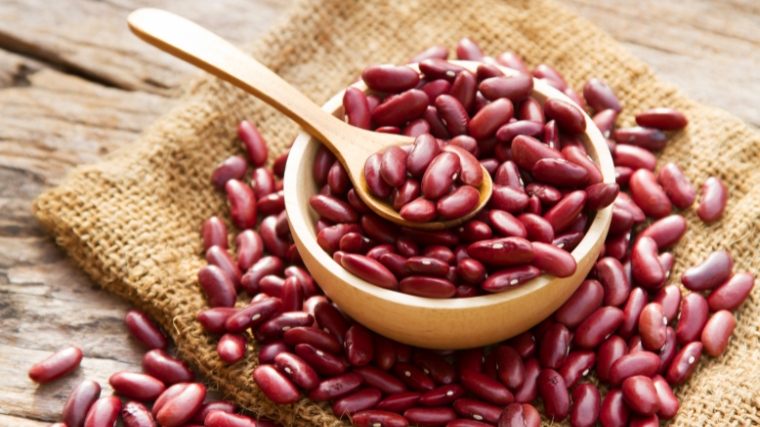
Because it’s such a dense source of fiber, you may in fact need to mix kidney beans in with a less fibrous food (such as white rice) to ensure you don’t cram too much fiber into a single meal and thus strain your digestive system.
Chickpeas
Much like lentils, rice, and kidney beans, chickpeas can form the base of many high-protein, nutrient-dense dishes. Think: pilaf, curries, and fajitas. Chickpeas are an efficient, tasty, and high-fiber staple for any strength athlete.
Oats
Thus far, there have been plenty of lunch and dinner options, but oats make a powerful breakfast base. They contain around 10.4 grams of fiber per 100 grams, per the FoodData Central feature of the USDA.
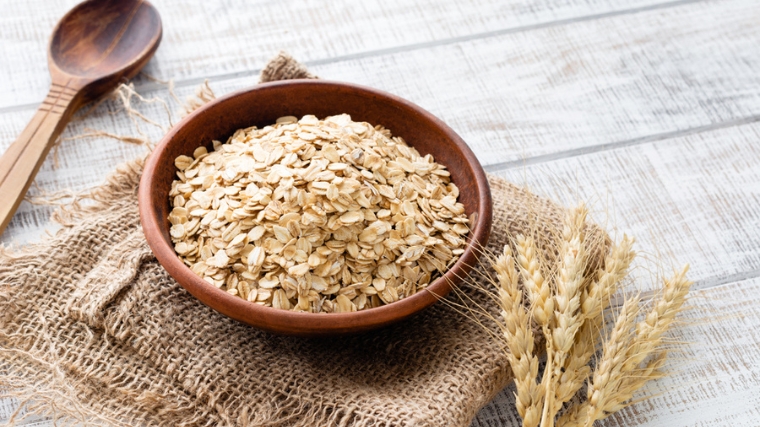
When combined with some of the seeds or fruits within this list, you can easily build a breakfast that contains 10 grams of fiber or more. Plus, with the option for either overnight oats or a warm, freshly prepared bowl in the morning, they’re perfect year-round.
Pears
These juicy fruits are a lower-calorie, sweeter place to get your fiber. Besides checking off one of your five-a-day, they contain 3.1 grams of fiber per 100 grams, according to the FoodData Central component of the USDA site.
Apples
If you’re not a fan of pears, apples are a fantastic source of fiber, too. According to the FoodData Central database, apples typically contain at least 2.1 of fiber per 100 grams, depending on the apple type you’re enjoying. Since apples can be baked, tossed into salads, or enjoyed as-is, they’re a diverse choice to add to your meal prep.
Bananas
Though they have slightly more calories per 100 grams than some other fruits on this list, the FoodData Central database says they contain 1.7 grams of fiber per 100 grams.
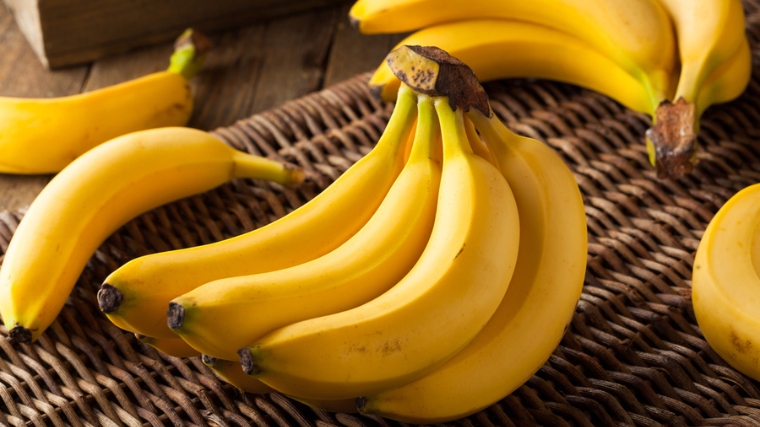
They’re also a brilliant option with meals and in between meals — you can add them to your oats, yogurt, or post-workout shake. You can also toss one into your gym bag for some post-workout carbs.
Blackberries
Whether you like to eat fresh berries or add frozen berries to your protein shakes, blackberries are another potent source of fiber. Since they’re relatively low in calories, they’re also a strong choice while cutting weight.
Carrots
Besides being a stellar source of vitamin A, carrots also contain 3.1 grams of fiber per 100 grams, per the FoodData Central component of the USDA’s site. Including carrots in your dinner-time vegetable medley is an easy way to bump up your fiber intake.
Broccoli
Broccoli is rich in antioxidants and may help to reduce unwanted inflammation — a driving force for many diseases. This veggie also contains a reasonable 2.4 grams of fiber per 100 grams, according to the FoodData Central site. And with just 39 calories in that same amount, it’s a fantastic way to add volume to any dish.
Brussels Sprouts
Like broccoli, Brussels sprouts have a superb list of benefits: they’re rich in vitamin K and vitamin C, contain potent antioxidants, and help to maintain steady blood sugar levels.
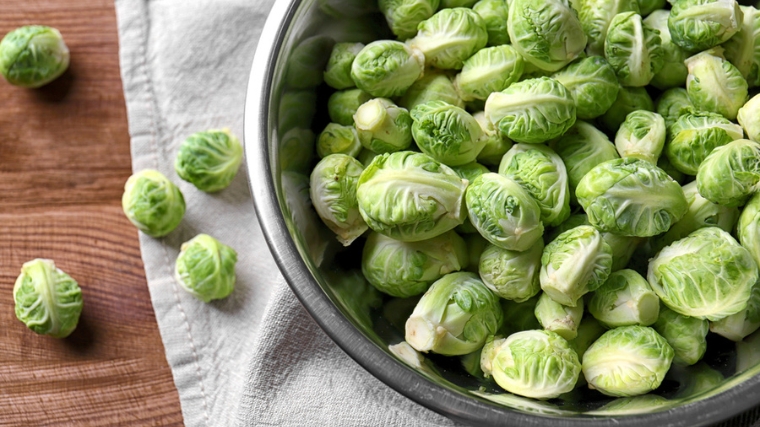
They, too, are a great way to increase the volume and fiber content of your meals, with just 43 calories per 100-gram serving and 3.8 grams of fiber, per the FoodData Central database.
Almonds
Though almonds are mostly a source of dietary fat and thus more calorie dense, they still provide a solid amount of fiber with 100 grams offering 10.8 grams of fiber, per FoodData Central. They also contain a solid amount of protein, which can be great for bulking season.
Chia Seeds
Though chia seeds aren’t really something you’re going to eat on their own, they make a fantastic addition to oat and yogurt recipes. And they’ll bring along with it a heaping helping of fiber.
How Does Fiber Impact Strength Training?
Fiber’s relationship with strength training isn’t quite as direct as those of the big macronutrients. But it is still a useful one.

For one thing, fibrous foods improve blood sugar control. (9) Soluble fiber, in particular, helps to maintain a steady digestive rate, which in turn stabilizes blood sugar levels and provides a smoother flow of energy. (9)
Stable energy levels, as strength athletes intuitively know, are paramount to persistent gains. When you’re able to stay consistent, you can achieve progressive overload in a more linear fashion.
Second, fibrous foods enhance insulin sensitivity. (10) One of insulin’s key roles is to help “shuttle” nutrients from the bloodstream into the relevant cells, which includes transporting amino acids (the “building blocks” of protein) into muscle cells. Therefore, maintaining good insulin sensitivity—and thus, the efficiency of these processes—will only lead to more reliable muscle repair and growth.
Other Benefits of Fiber for Strength Athletes
The health benefits that high-fiber foods provide — a stronger immune system and feeling more satiated after eating — are especially useful when lifting during a cut.
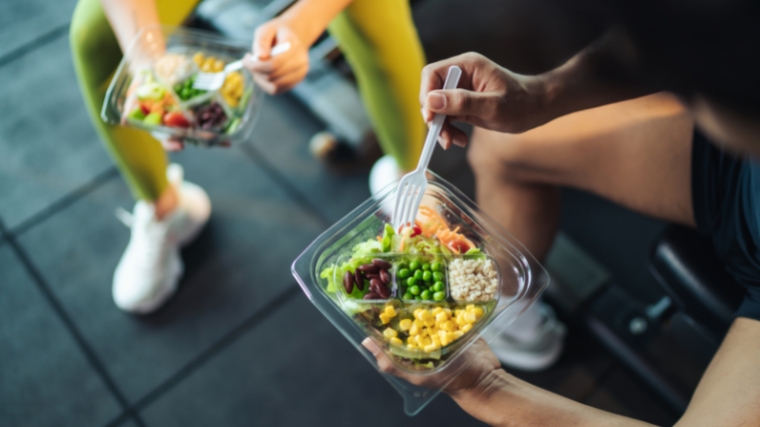
When you’re restricting calories, progressive overload is a finer, more tentative process. You’ll add fewer reps and weight to the bar week after week if any at all. Reducing the likelihood of time off because of sickness will allow you to eke out those marginal gains and minimize any backsliding.
Likewise, the added feeling of fullness that fiber provides may help increase your compliance with a reduced calorie intake. And the sooner you can get a cut over with, the sooner you can get back to eating in a caloric surplus. This allows you to make more efficient gains. A caloric surplus, after all, is preferable for building muscle.
How Much Fiber Do You Need?
As for how much soluble fiber and insoluble fiber you ought to consume, you needn’t have two separate targets. Instead, you can focus on your total fiber intake while eating an array of foodstuffs that contain each type. That is, aim for various vegetables, beans, fruits, seeds, grains, and nuts.
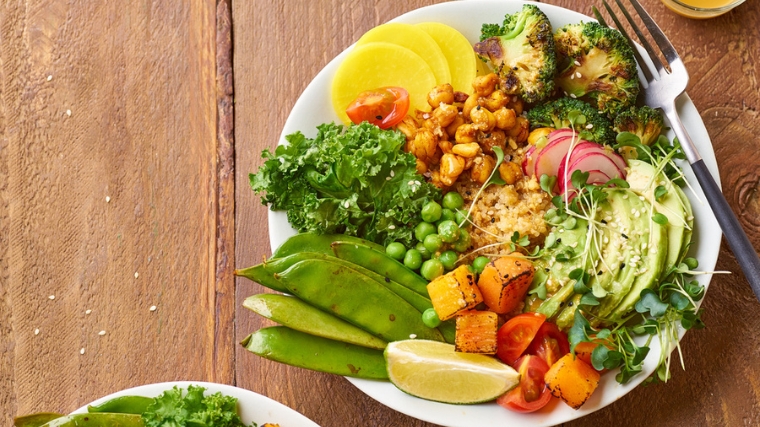
According to the American Dietetic Association, you can approach your fiber intake in one of two ways. (8) There’s a fixed approach and a relative approach:
- Fixed approach: Aim for 28 grams per day for women and 34 grams per day for men. These figures vary slightly with age. There aren’t currently official gender-based intake recommendations for nonbinary and transgender people.
- Relative Approach: Consume 14 grams of fiber per 1,000 calories eaten.
While both approaches are recommended by the American Dietetic Association, the latter enables you to tailor your intake to your current diet. So whether you’re cutting, bulking, or maintaining, you can keep your food selection more routine and balanced.
For example, you may be planning to bulk on 3,000 calories per day for several months then move into a cut at 2,000 calories per day. If your fiber intake is fixed, regardless of your calorie intake, you’ll need to be cognizant of which fiber-rich foods you’re eating, so that you can scale those portions up or down accordingly.
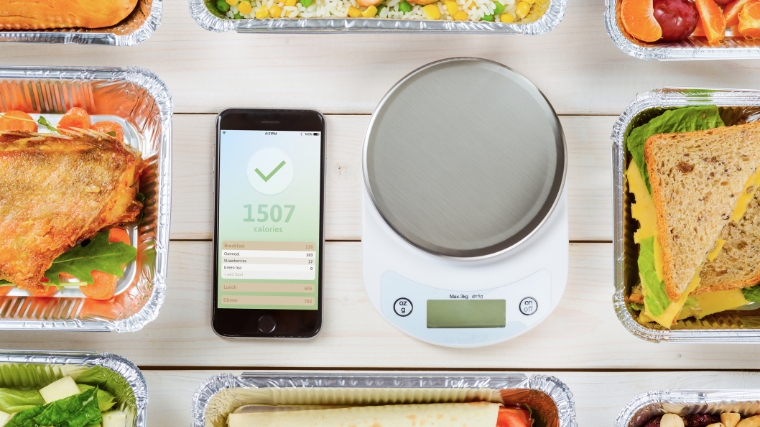
If, however, your fiber intake is proportionate to your total calorie intake, you’ll likely be on track with your daily target as long as you’re eating a meaningful amount of fiber with each meal. You can do this without having to micromanage your food selection.
In other words, once you’re eating enough fiber that you routinely hit 14 grams per 1,000 calories eaten, all you need to do is maintain those habits. Then, regardless of your calorie consumption, you’ll always be on track with your fiber intake.
How to Get Enough Dietary Fiber
When deciding which fibrous foods to eat, you want to hit three criteria:
- Eat a generous mix of fibrous foods so that you consume adequate soluble and insoluble fiber.
- Prioritize low-glycemic index foods (carbs that are broken down and put to work slowly), as this will further support blood sugar control.
- Choose the high-fiber foods you enjoy. Without making dietary changes fun and easy, a higher-fiber diet is less likely to stick.

The 20 high-fiber foods listed above include plenty of options that tick all three boxes.
Myths About Dietary Fiber
Dietary fiber isn’t often demonized in the same fashion as protein, carbs, and fats. Still, there are a few misconceptions about fiber and how much you ought to consume.
Myth: There’s No Such Thing As Too Much
It turns out that you can, indeed, have too much of a good thing. It is possible to overdo your fiber consumption. If you regularly eat a large amount of fiber per day, bloating, abdominal pain, intestinal blockages, and cramping are all potential risks.
Myth: Just Eat More Fruits and Veggies for Fiber
A common adage is to simply “eat more fruits and vegetables” to increase your fiber intake. It is true that many fruits and vegetables are fantastic sources of fiber. But some are actually relatively poor options. Typically, the more “watery” produce like watermelon, cucumber, and celery aren’t particularly fibrous.
Myth: It’s Always Easy to Get Enough Fiber
While getting enough fiber isn’t complicated, it still can be difficult to hit your daily fiber intake. You have to be intentional about it. Commonly available products like white bread, crackers, and pastries do not actually contain a lot of fiber. But with some sound meal planning and simple swaps — like opting for whole grains as a base for your meals and snacking on high-fiber fruits — you can reliably chip away at your fiber needs without having to nitpick your food selection.
Eat Your Fiber
Dietary fiber probably isn’t the first thing that comes to mind when you think about nutrition for strength athletes. But eating adequate fiber will provide another layer of support for your strength training needs. It’ll fight disease, reduce the odds of overeating, and keep several aspects of good health — like improved insulin sensitivity and steady blood sugar levels — running smoothly.
By eating enough fiber, you may improve your consistency in the gym, aid your general well-being, and enhance the bottom line of your health. So, once you’ve established your calorie and macronutrient needs, take the time to calculate your fiber intake. It’ll be tasty, too.
References
- King, A., Helms, E., Zinn, C., & Jukic, I. (2022). The ergogenic effects of acute carbohydrate feeding on resistance exercise performance: a systematic review and meta-analysis. Sports Medicine, 1-22.
- Barber, T. M., Kabisch, S., Pfeiffer, A. F., & Weickert, M. O. (2020). The health benefits of dietary fibre. Nutrients, 12(10), 3209.
- Slavin, J., & Green, H. (2007). Dietary fibre and satiety. Nutrition Bulletin, 32, 32-42.
- McRae, M. P. (2017). Dietary fiber is beneficial for the prevention of cardiovascular disease: an umbrella review of meta-analyses. Journal of chiropractic medicine, 16(4), 289-299.
- Aune, D., Chan, D. S., Lau, R., Vieira, R., Greenwood, D. C., Kampman, E., & Norat, T. (2011). Dietary fibre, whole grains, and risk of colorectal cancer: systematic review and dose-response meta-analysis of prospective studies. Bmj, 343.
- Threapleton, D. E., Greenwood, D. C., Evans, C. E., Cleghorn, C. L., Nykjaer, C., Woodhead, C., … & Burley, V. J. (2013). Dietary fiber intake and risk of first stroke: a systematic review and meta-analysis. Stroke, 44(5), 1360-1368.
- Guan, Z. W., Yu, E. Z., & Feng, Q. (2021). Soluble dietary fiber, one of the most important nutrients for the gut microbiota. Molecules, 26(22), 6802.
- Slavin JL. Position of the American Dietetic Association: health implications of dietary fiber. J Am Diet Assoc. 2008 Oct;108(10):1716-31.
- Reynolds AN, Akerman AP, Mann J. Dietary fibre and whole grains in diabetes management: Systematic review and meta-analyses. PLoS Med. 2020 Mar 6;17(3):e1003053.
- Weickert MO, Möhlig M, Schöfl C, Arafat AM, Otto B, Viehoff H, Koebnick C, Kohl A, Spranger J, Pfeiffer AF. Cereal fiber improves whole-body insulin sensitivity in overweight and obese women. Diabetes Care. 2006 Apr;29(4):775-80.
Featured Image: Marilyn Barbone / Shutterstock